Discount up to 35% for first purchase only this month.
IMDK CE & FDA Certify Fingertip OLED Display Pulse Oximeter – C101A2
3,000.00৳ Original price was: 3,000.00৳ .1,800.00৳ Current price is: 1,800.00৳ .
- Model No: C101A2
- Measurable Range Of Oxygen Saturation Level: 70%~99%
- Measurable Range Of Pulse Rate: 30~240BPM
- Accuracy Range For Oxygen Saturation Level: ±2% (70%~99%), unspecified (<70%)
- Accuracy Range For Pulse Rate: ±1BPM OR ±1% (select larger)
- Accuracy Range For Blood Perfusion Index: ≥0.2%, ±0.1%
- Resolution: ±1%
- Power: ≤30mA
- Suitable Temperature Range: 5℃~40℃
- Ambient Humidity: 15%~80% during work, 10%~80% during storage;
- Suitable Range Of Air Pressure: 70Kpa~106Kpa
- Battery Model: 2*1.5V(Two AAA alkaline batteries)
- Material: ABS+PC
- Pickup: Available today at store
- 1 Year Local Official Distributor Service Warranty
IMDK CE & FDA Certify Fingertip OLED Display Pulse Oximeter – C101A2 Price in BD
As we all know, the level of oxygen saturation is an important index for the health of the lungs. Pulse oximetry is a noninvasive and painless method of measuring the oxygen saturation of the blood. Fingertip pulse oximeters are routinely used, from regular physical check-ups to surgery. Do you wonder how a fingertip pulse oximeter exactly works? Such a small electronic device utilizes a cold light source that can emit light through the fingertip. That is why the fingertip appears to be red when the fingertip pulse oximeter is clipped onto it. And the device’s sensor can accurately detect and measure the light that passes through the fingertip without being absorbed by the blood and tissue; through this approach, the device can calculate the amount of oxygen in red blood cells (red blood cells carry the oxygen around a body for aerobic respiration).
A fingertip pulse oximeter integrates the blood oxygen level detector, data processing module, and displaying module into one. It has the advantages of small size, low power consumption, ease of use, lightweight, and portability.
The OLED/LED display board clearly shows the real-time wave graph according to the accurate data. The perfusion index is particularly designed to reflect the pulsation flow. All the operations can be completed with one button. The size of the fingertip pulse oximeter is so small that you can carry it around. This device is quite suitable for everyday use; with it, you can better monitor your health whenever and wherever you like.
Brand: IMDK.
Type: Pulse Oximeter.
Model No: C101A2 (Origin: China).
OLED display for easy read, 4-direction adjustable.
Sleep monitoring for up to 8 hours.
Simultaneous display for testing value and bar graph.
Low-power consumption.
Low battery voltage indicator.
Auto power off 8 seconds automatic shutdown.
Very light: weight only 2.2 oz with 2 AAA alkaline batteries (batteries not included).
Fits every finger size.
6,000 spot checks.
FDA approved.
Power: 2AAA 1.5 V alkaline battery (not included in the package).
Supply voltage: 2.6-3.6V.
Air Pressure: 70kPA – 106 kPa.
Working Current: ≤ 30 mA.
Pulse Rate:
Measurement range: 30 BPM – 240 BPM.
Resolution: ±1%.
Accuracy: ±2bpm or +2% (select larger).
Low Perfusion ≤0.4%.
Sleep Monitor: Perfusion Index (PI) will improve the reliability of the readings dramatically. The PI conveniently informs you of the strength of your pulse. The sleep monitoring function can keep the data record for 8 hours and it will start analyzing after monitoring for more than 2 hours.
Multi-Direction Display
Multidirectional display: 4 directions, and 6 modes to allow you to view your results in any direction.
Alarm Function
The alarm will release warning sounds once the measured values go beyond the setting which gives you an immediate response.
According to customers’ feedback, our fingertip pulse oximeters are often used in families, hospitals, and communities. The main user groups of this product include people who travel at high altitudes, patients who need to recuperate at home for a long time, mountain climbing enthusiasts, old people aged over 60 years (low oxygen levels and shortness of breath are two typical symptoms of old people’s respiratory diseases), athletes (in extreme sports and the plateau environment where the lack of oxygen is serious, blood oxygen level monitoring is very necessary for athletes. By observing blood circulation after sports, athletes can receive more valuable guidance based on more comprehensive data), sports fans, people who work extremely hard for long hours (this group of people is particularly apt to experience episodes of brain hypoxia), and people who have to work in enclosed spaces.
Functions and features:
- The parameters that the screens display include: SpO2 value, pulse rate value, bar chart for blood oxygen saturation levels, wave graph for pulse rates, perfusion index, and respiratory rate.
- Displaying ways are flexible: the rotatable multi-direction display allows you to check data in 4 directions, and 6 displaying modes;
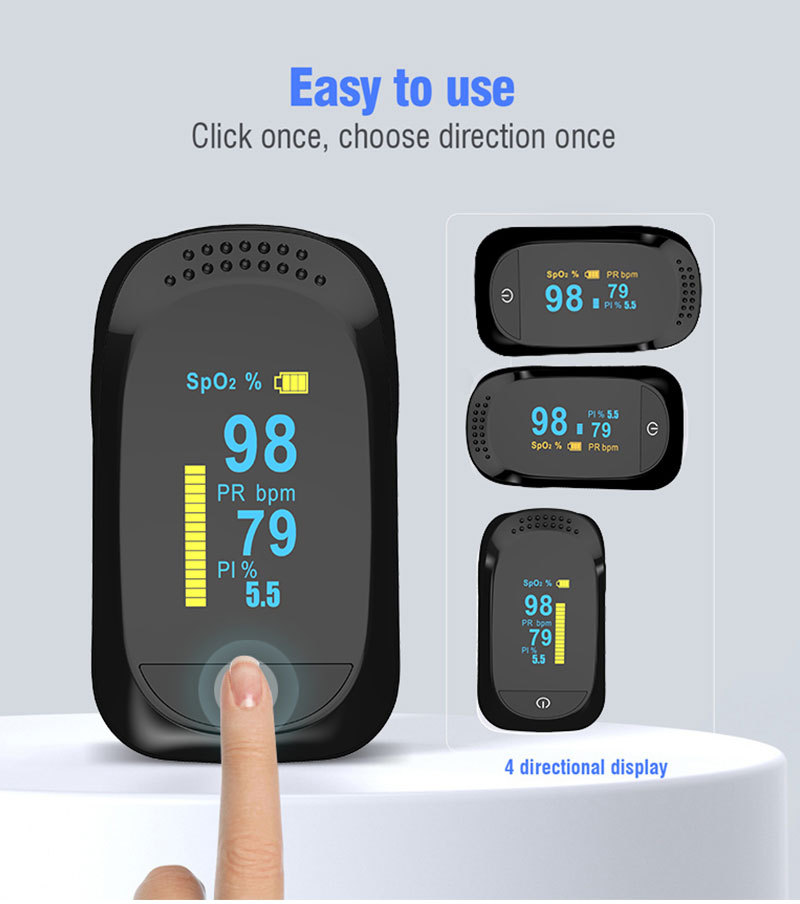
- It is energy-saving: the power consumption is low; it can work for more than 40 hours on 2 AAA batteries.
- You will receive a low voltage warning: once the battery drops below a threshold, the pulse oximeter will alarm automatically.
- It can shut down automatically: if it has not received any signal within 8 seconds, it will power off automatically.
- It can monitor your night sleep: do you think it is expensive and inconvenient to conduct a full-blown sleep study? With this advanced pulse oximeter, you can monitor your blood oxygen (SpO2) levels as you sleep during the night. Overnight pulse oximetry is proven to be a beneficial and effective technique to determine a patient’s cardiorespiratory status in both outpatient and inpatient settings.
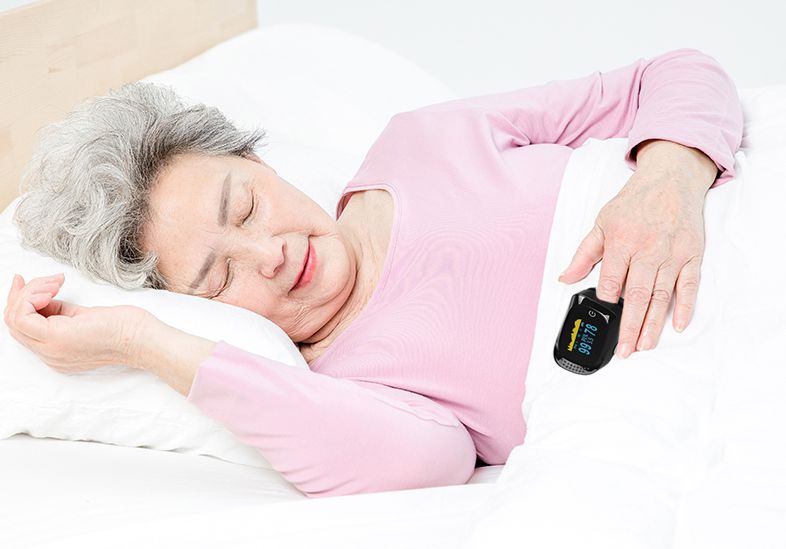
What you need to know about its major parameters:
SpO2: SpO2 also refers to oxygen saturation level, the normal oximeter reading for oxygen saturation level ranges between 95% and 100%. If the value drops below this range, probably the user is experiencing symptoms related to lack of oxygen, such as difficulty breathing and mental confusion.
If the value drops below 92%, especially if the value is obviously under 90%, that is worthy of concern. For people living at high altitudes, it may be normal to have an oxygen saturation level that falls below 90% (high altitudes can inevitably cause low blood oxygen levels or even blood oxygen desaturation); but in general, when it comes to a significant low level, the user might need supplemental oxygen or might be advised to stay in the hospital for further observation. In other words, the SpO2 value is an important parameter that can be used for observing disease progression, lung function, and how well certain therapies are working.
Pulse rate: pulse rate (also known as heart rate) is the number of times each minute a person’s heart beats. For adults, the normal resting heart (when not exercising or not excited) ranges from 60 to 100 BPM (beats per minute). In general, a lower resting heart rate means more efficient heart function; the fitter a person is, the lower their resting heart rate is. For example, a lot of athletes have a resting heart rate of 40~60 BPM.
Perfusion Index: this is often abbreviated as PI; this value reflects the ratio of the pulsatile blood flow to the non-pulsatile blood flow in the peripheral tissues; more exactly, it measures the strength of the pulse at the part of the body where the pulse oximeter is placed. The higher the value is, the better the blood can flow through the body. The significantly low value can signal health problems associated with blood vessels or hearts. The normal PI ranges from 0.02% (for very weak pulses) to 40% (for very strong pulses). The PI values are relative numbers and can vary depending on physiological conditions and monitoring areas.
Moreover, perfusion index readings also have a strong correlation with the core-to-peripheral temperature gradient as well as the refill time of capillaries. Therefore, in the majority of hospitals, PI is just used along with other parameters to monitor a patient’s overall health status. For the correct monitoring purposes, a patient may need to establish his/her own “normal” perfusion index range in a given situation.
Internal structure:

Package:

- “I have compared your product with other professional pulse oximeters, but it looks like the data is not very accurate.”
As we all know, blood pressure is constantly changing, it can fluctuate every time the heart beats. And the same applies to oxygen saturation level and pulse rate. As we have just mentioned, whether for SpO2 data or pulse rate data, the range of accuracy of our pulse oximeters is controlled under ± 2%; moreover, the data can also vary from the part of the body; it is normal.
In terms of our oximeters’ reliability and accuracy during clinical tests, the generated data is trustworthy.
- “Why does not my fingertip pulse oximeter show data?”
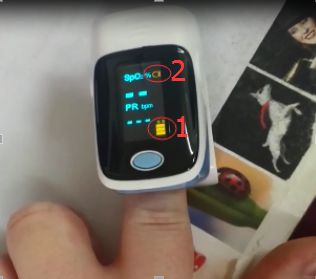
Like the image, as long as circle-1 is still fluctuating, it proves the product is working normally. And look at circle-2, it shows the batteries are running down; in this case, you need to replace the batteries because the current power is not strong enough to make the pulse oximeter run all the functions normally.
- “Which finger is the most suitable for testing?”
In general, you might opt for your relatively thin finger. But if your fingers are too small, that is another matter; in such a situation, you might consider a relatively thick finger, such as your thumbs or forefingers. In addition, to make it easy for your pulse oximeter to sense your skin to give the measurement results quickly, you need to put your finger inside the oximeter as much as possible.
- “Does nail polish influence the accuracy of a result, do I have to remove it?”
Yes; nail polish and fake fingernails can affect the oximeter’s ability to provide a correct reading. If possible, you might consider another application site or switch to an unpolished fingernail.
- “Does your device support Bluetooth?”
By default, our pulse oximeter is designed without the Bluetooth capability. But if you want ones with Bluetooth, we can also design them according to your needs.
- Can the oximeter be used for infants? ”
Sorry, this type of oximeter belongs to adult pulse oximeters, not pediatric pulse oximeters; in other words, our fingertip pulse oximeters are not suitable for infants and young children.
- “Can you provide OEM services? I want to customize the package with our logo brand?”
Yes, we can; but the minimum order quantity should reach 500 pieces.
- “It looks like your oximeters just provide 3 major parameters – SpO2, PR, PI; but we also want to monitor RR (respiratory rate) from oximeters, so can we customize oximeters with this parameter? ?”
Yes, we can manufacture oximeters that have all 4 parameters, it just depends on your needs; currently, the majority of customers do not use oximeters to measure respiratory rate, so we default to providing oximeters with SpO2, PR, and PI;
Be the first to review “IMDK CE & FDA Certify Fingertip OLED Display Pulse Oximeter – C101A2” Cancel reply
24/7 Open
Your Needs, Our Time – 24/7.
Fast Delivery
Quick and Reliable Delivery Every Time.
Cash on Delivery
Order Easily, Pay at Your Doorstep: Cash on Delivery!
Featured Products
-
Bi-Level ST and ASV
ResMed Lumis 100 VPAP ST BiPAP Machine
Rated 0 out of 5170,000.00৳Original price was: 170,000.00৳ .165,000.00৳ Current price is: 165,000.00৳ . -
Oxygen Concentrator
OLV-5L Olive 5L Oxygen Concentrator price in Dhaka BD
Rated 0 out of 545,000.00৳Original price was: 45,000.00৳ .43,000.00৳ Current price is: 43,000.00৳ . -
Oxygen Concentrator
Owgels Oxygen Concentrator 5L
Rated 0 out of 546,000.00৳Original price was: 46,000.00৳ .41,000.00৳ Current price is: 41,000.00৳ . -
Oxygen Cylinder
China oxygen cylinder Full Setup Price in BD
Rated 0 out of 510,000.00৳Original price was: 10,000.00৳ .9,000.00৳ Current price is: 9,000.00৳ .
Related products
Related products
-
Oxygen Equipment
Yuwell 7F-5B Medical Oxygen Concentrator with Nebulizer
Rated 0 out of 550,000.00৳Original price was: 50,000.00৳ .45,000.00৳ Current price is: 45,000.00৳ . -
Oxygen Equipment
Portable JAY-1 5-Liter Portable Oxygen Concentrator With Battery
Rated 0 out of 565,000.00৳Original price was: 65,000.00৳ .45,000.00৳ Current price is: 45,000.00৳ . -
Oxygen Equipment
Owgels (10 Liter) Oxygen Concentrator (OZ-10-02 TW0) Price in Bangladesh
Rated 0 out of 585,000.00৳Original price was: 85,000.00৳ .70,000.00৳ Current price is: 70,000.00৳ . -
Oxygen Equipment
DEDAKJ DDT-2A Portable Home Oxygen Concentrator Price in BD
Rated 0 out of 565,000.00৳Original price was: 65,000.00৳ .55,000.00৳ Current price is: 55,000.00৳ . -
Oxygen Equipment
Medical Oxygen Cylinder Refill Home Service in Dhaka City
Rated 0 out of 51,000.00৳Original price was: 1,000.00৳ .800.00৳ Current price is: 800.00৳ . -
Oxygen Cylinder
China oxygen cylinder Full Setup Price in BD
Rated 0 out of 510,000.00৳Original price was: 10,000.00৳ .9,000.00৳ Current price is: 9,000.00৳ .


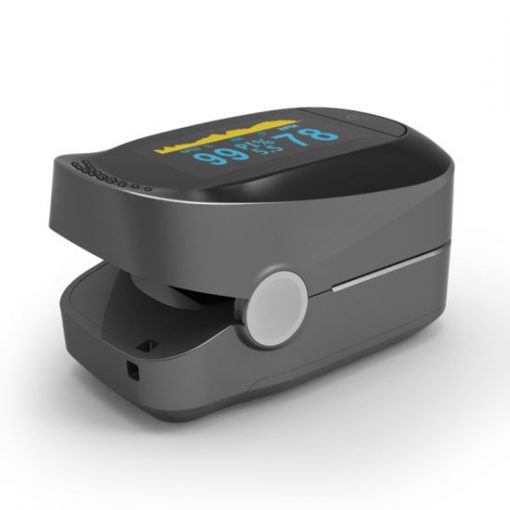
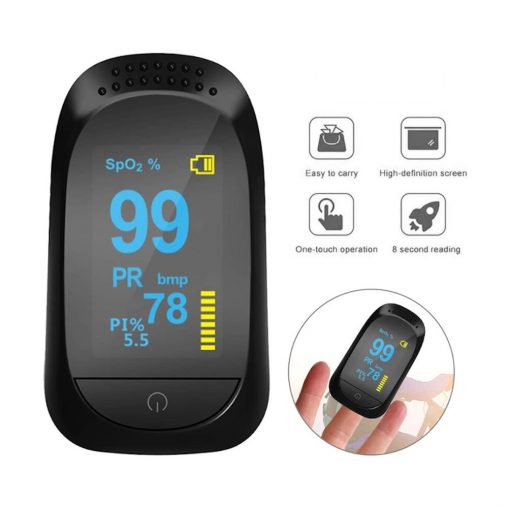
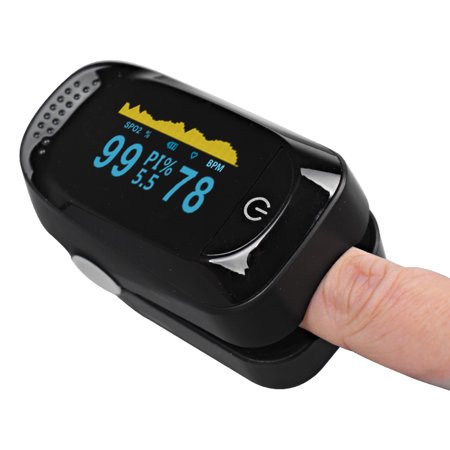


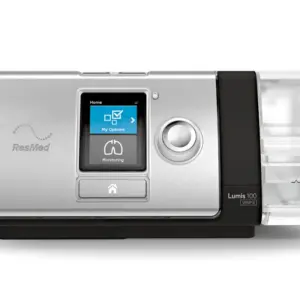


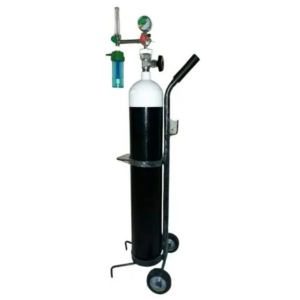
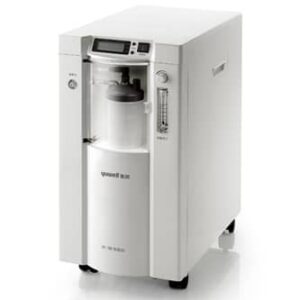
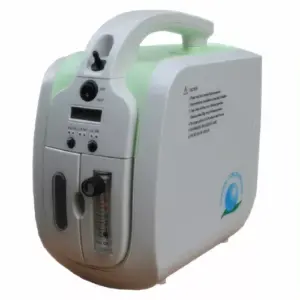


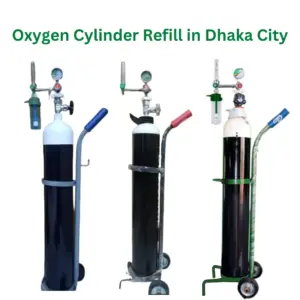

Reviews
There are no reviews yet.